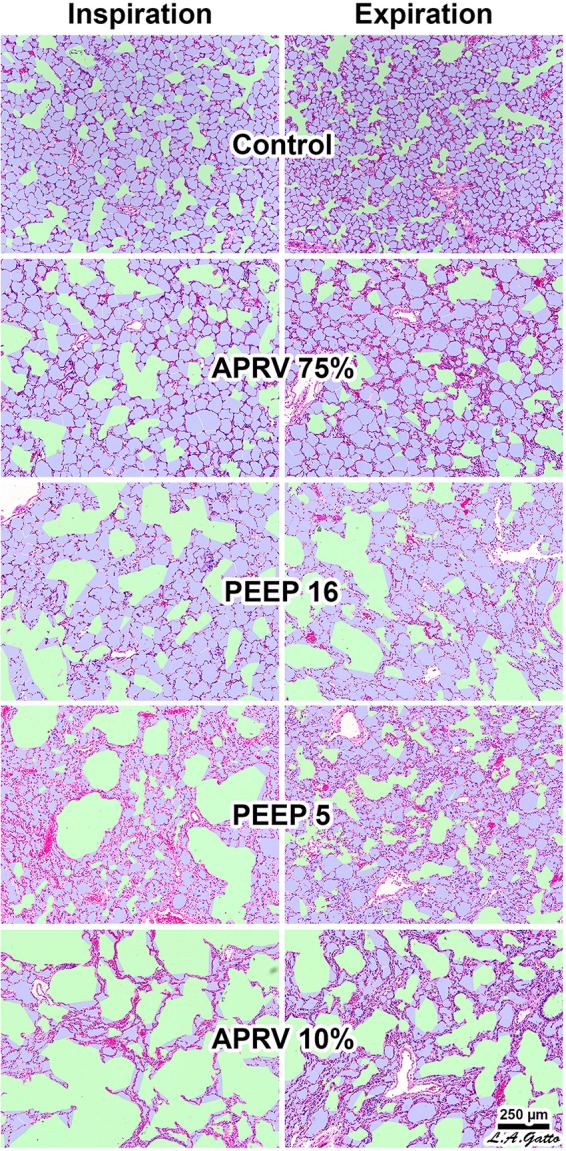FIGURE 7.

Rat lungs fixed at inspiration and expiration in normal lungs (Control) and in a Tween lavage ARDS model with four ventilation strategies: (1) the TCAV method setting airway pressure release ventilation (APRV) with the expiratory flow termination (EFT) at 75% of expiratory flow peak (EFP) (EFT/EFP = 75%) (APRV 75%) (Habashi, 2005; Jain et al., 2016); (2) EFT/EFP = 10% (APRV 10%), which significantly increased expiratory time; (3) controlled mandatory ventilation (CMV) with low tidal volume (6 mL/kg) with 5 cm H2O positive end-expiratory pressure (PEEP 5); or (4) CMV with low tidal volume (6 mL/kg) with 16 cm H2O PEEP (PEEP 16). APRV 10% (not the TCAV method) significantly increased expiratory duration, allowing sufficient time for alveoli to collapse. The conducting airways are depicted in green; alveoli in lilac; and remaining interstitium, blood vessels, and lymphatics in magenta. The size of each microanatomical area was quantified using computer image analysis. In the Control group all alveoli were inflated surrounding normally distended alveolar ducts. Following Tween-induced ARDS, alveolar ducts in all ventilation groups were increased in size. In the CMV groups alveolar ducts were overdistended at both inspiration and expiration in PEEP16. In the PEEP5 group alveolar ducts were relatively normal size at expiration but greatly overdistended at inspiration with areas of alveolar collapse (i.e., high dynamic strain) at both inspiration and expiration. APRV 10% resulted in highly overdistended alveolar ducts at both inspiration and expiration with large areas of collapsed alveoli. APRV 75% (i.e., the TCAV method) resulted in the smallest increase in alveolar duct size, with uniformly open, homogeneously ventilated alveoli that were closest to those seen in the Control group (Kollisch-Singule et al., 2014b). Permissions obtained from Elsevier. License 4732510649425.
